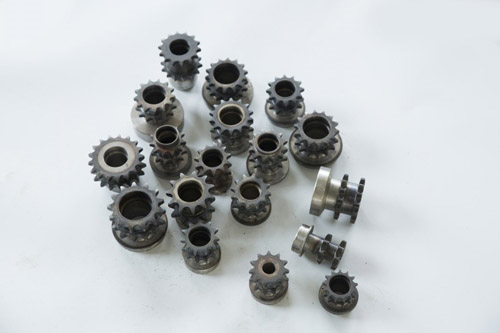Product displayProduct Display
- Coupling
- Small flexible coupling
- Pulley
- gear
- rack
- Sprocket
- Spiral bevel gear
- Bevel gear
- Worm Gear
- Expansion coupling sleeve
- Torque limiter
- Timing belt
- Pulley
- Cone sleeve embedded pulley
Email: [email protected]
gear
Non-standard gear
The tooth profile of the gear includes tooth profile curve, pressure angle, tooth height and displacement.Involute gears are easier to manufacture, so in modern gears, involute gears account for the absolute majority, while cycloid gears and arc gears are less used.
In terms of pressure angle, the load-carrying capacity of gears with small pressure angles is smaller; while gears with large pressure angles have higher load-bearing capacity, but the load on the bearing increases under the same transmission torque, so it is only used in special cases.The tooth height of gears has been standardized, and standard tooth heights are generally adopted.There are many advantages of displacement gears, which have been used in all kinds of mechanical equipment.
In addition, gears can also be divided into cylindrical gears, bevel gears, non-circular gears, racks, and worm gears according to their shape; according to the shape of the tooth line, they can be divided into spur gears, helical gears, herringbone gears, and curved gears; The surface is divided into external gears and internal gears; according to the manufacturing method, it can be divided into cast gears, cut gears, rolled gears, and sintered gears.
The manufacturing material and heat treatment process of the gear have a great influence on the load-bearing capacity and size and weight of the gear. Before the 20s, carbon steel was mostly used for gears, alloy steel was used in the 50s, and case hardened steel was used in the 60s.According to the hardness, the tooth surface can be divided into two types: soft tooth surface and hard tooth surface.
Gears with soft tooth surfaces have low load-bearing capacity, but they are easier to manufacture and have good running-in performance. They are mostly used in general machinery with no strict restrictions on transmission size and weight and small-volume production.Because the small wheel has a heavier burden among the matched gears, in order to make the working life of the large and small gears roughly equal, the hardness of the tooth surface of the small wheel is generally higher than that of the large wheel.
Hardened gears have a high load-bearing capacity. After the gear is cut, it is quenched, surface quenched or carburized and quenched to increase the hardness.But in the heat treatment, the gear will inevitably be deformed, so after the heat treatment, grinding, grinding or fine cutting must be carried out to eliminate the error caused by the deformation and improve the accuracy of the gear.

